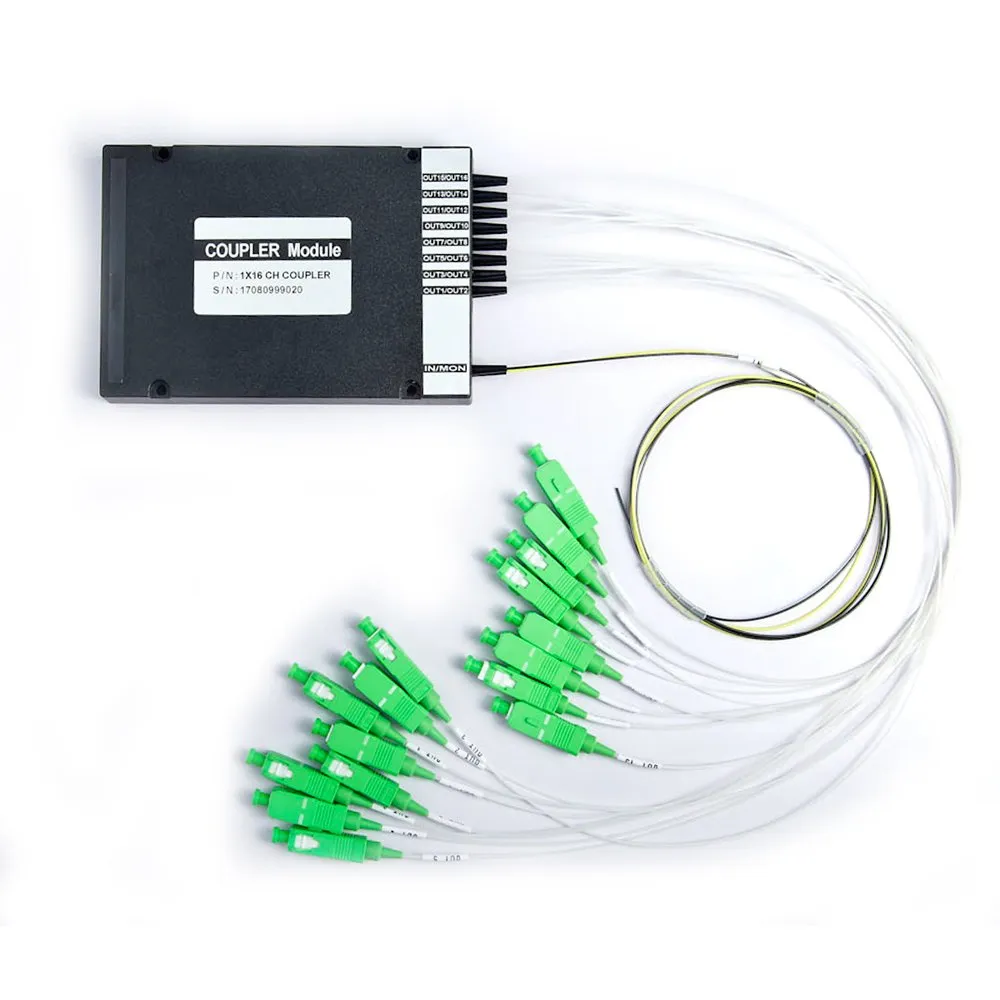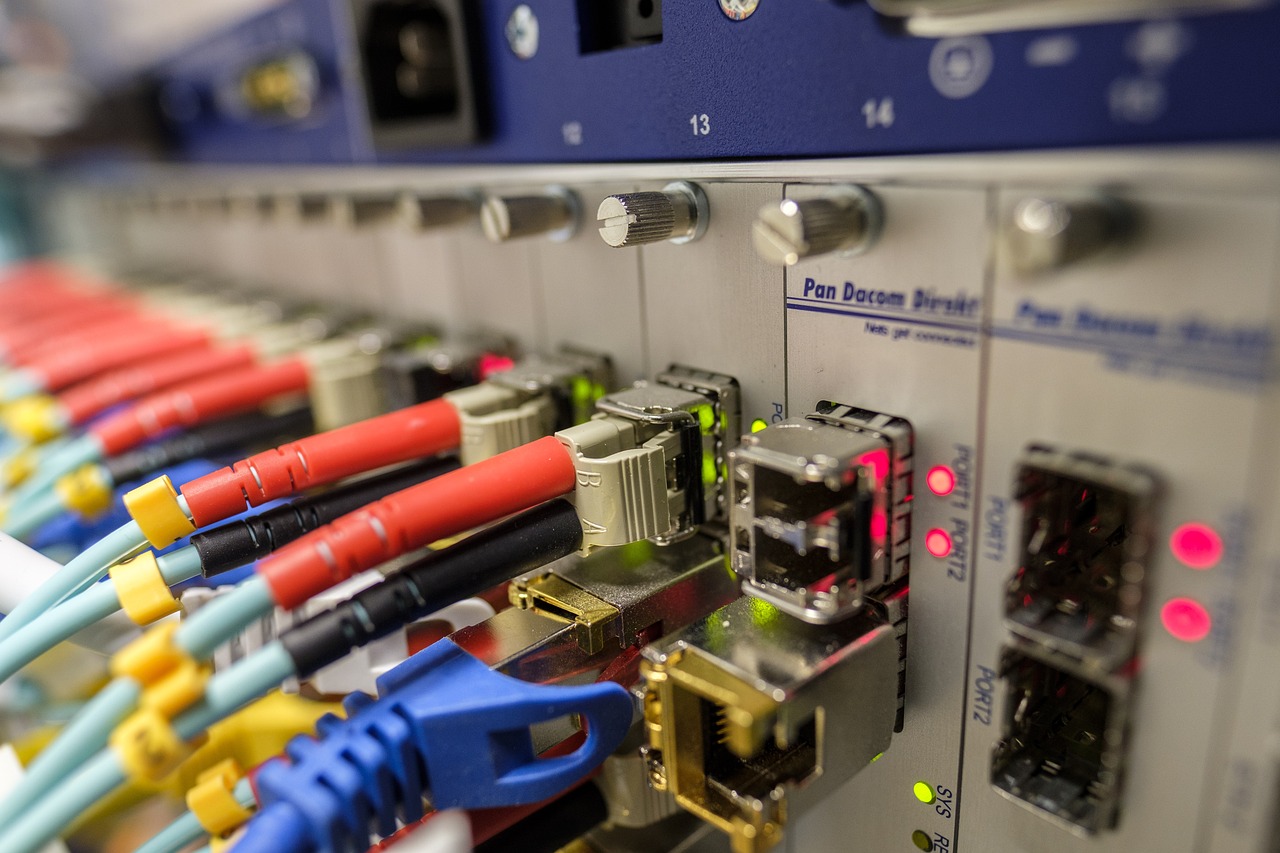Understanding the Benefits of 1*16 CH SC/APC Connector Single Fiber DWDM Mux Demux ABS/LGX Module

Introduction to DWDM Technology and Its Importance
In the world of modern telecommunications, DWDM stands as a crucial technology that enables the efficient transmission of large volumes of data over long distances.
What is DWDM?
At its core, DWDM (Dense Wavelength Division Multiplexing) is a method used to increase the capacity of optical fibers by transmitting multiple signals simultaneously at different wavelengths. This process allows for the integration of various data streams into a single optical fiber, effectively maximizing its potential.
The Basics of Wavelength Division Multiplexing
Wavelength Division Multiplexing, or WDM, involves combining multiple optical carrier signals onto a single optical fiber by using different wavelengths of laser light. This technique enables bidirectional communication over one strand of fiber, effectively multiplying the capacity of the existing network infrastructure.
Why DWDM Matters in Modern Networks
The significance of DWDM in contemporary networks cannot be overstated. As digital demands continue to soar, there is an ever-growing need for enhanced bandwidth capabilities to support high-speed data transmission and communication.
Meeting the Demand for High Bandwidth
With the exponential increase in data traffic, traditional network infrastructures are often unable to keep up with the demand for high bandwidth. Herein lies the importance of DWDM Mux, which efficiently addresses this challenge by enabling the seamless integration and transmission of multiple data streams over a single fiber.
Exploring the Role of SC/APC Connector in Network Efficiency
In the realm of optical networking, the SC/APC connector plays a pivotal role in ensuring seamless and efficient data transmission.
The Importance of the SC/APC Connector
The SC/APC connector is characterized by its precise and secure connection mechanism. Its design features a push-pull coupling method that ensures a reliable and stable connection between optical fibers. Additionally, its angled end face helps minimize back reflection, making it ideal for high-quality signal transmission.
Characteristics of SC/APC Connectors
Precision: The SC/APC connector is renowned for its precision alignment, which minimizes signal loss and ensures optimal performance.
Durability: With a robust build, these connectors offer long-term reliability, making them suitable for demanding network environments.
Compatibility: The SC/APC connector is widely compatible with various fiber types and sizes, providing versatility in network configurations.
How SC/APC Connectors Enhance DWDM Mux Performance
The integration of SC/APC connectors within DWDM Mux systems significantly enhances overall performance by ensuring consistent and dependable connections.
Ensuring Reliable Connections
Signal Integrity: By minimizing back reflection, SC/APC connectors contribute to maintaining signal integrity within the DWDM Mux, resulting in enhanced data transmission quality.
Reduced Loss: The precise alignment of SC/APC connectors reduces insertion loss, optimizing the efficiency of data transmission across the network.
In essence, the utilization of SC/APC connectors within DWDM Mux systems not only fosters reliable connections but also elevates network efficiency to meet the escalating demands for high-speed data transmission.
The Impact of Low Insertion Loss on Network Performance
In the realm of optical networking, understanding the concept of Low Insertion Loss is crucial for ensuring optimal network performance.
Understanding Low Insertion Loss
When discussing optical components and systems, Low Insertion Loss refers to the minimal amount of signal loss that occurs when light passes through a device or connection point. In essence, it signifies the efficiency of transmitting signals without significant attenuation.
What Does Low Insertion Loss Mean?
Low Insertion Loss essentially indicates that the signal experiences minimal degradation as it traverses through various optical components and connections within a network. This characteristic is vital for maintaining the integrity and strength of the transmitted data throughout the network infrastructure.
Benefits of Low Insertion Loss in DWDM Systems
The incorporation of Low Insertion Loss in DWDM Mux systems yields substantial benefits that directly contribute to improved network performance and reliability.
Improved Signal Quality and Network Efficiency
Enhanced Signal Integrity: Low Insertion Loss ensures that the transmitted signals maintain their original quality, resulting in minimal distortion and superior data integrity across the network.
Optimal Data Transmission: By minimizing signal loss, Low Insertion Loss facilitates efficient data transmission within DWDM Mux systems, leading to enhanced network efficiency and reduced latency.
Long-Distance Reach: The presence of Low Insertion Loss enables signals to travel longer distances without significant degradation, making it an essential factor for long-haul communication networks.
Understanding High Isolation in DWDM Systems
In the realm of DWDM technology, High Isolation plays a critical role in ensuring the integrity and efficiency of data transmission across optical networks.
The Concept of High Isolation
High Isolation refers to the capability of a system to maintain a clear distinction between different channels or wavelengths within a DWDM Mux Demux module. This separation is vital for preventing interference and crosstalk between the transmitted signals, thereby preserving the purity and fidelity of each individual data stream.
What is High Isolation and Why is it Important?
The importance of High Isolation lies in its ability to safeguard signal integrity by minimizing any form of signal contamination or overlap. By effectively isolating each channel, this feature ensures that the transmitted data remains distinct and free from interference, thereby upholding the overall quality and reliability of the network communication.
Advantages of High Isolation in DWDM Mux Demux Modules
The incorporation of High Isolation within DWDM Mux Demux modules yields several advantages that significantly enhance network performance and reliability.
Enhancing Signal Integrity and Reducing Crosstalk
Signal Purity: High Isolation fosters an environment where each transmitted signal maintains its purity without being affected by neighboring channels, resulting in superior signal integrity throughout the network.
Minimized Crosstalk: By effectively isolating individual channels, High Isolation mitigates the risk of crosstalk, which can compromise signal quality and lead to data errors. This reduction in interference contributes to a more robust and reliable network communication infrastructure.
Enhanced Data Accuracy: The presence of High Isolation ensures that each channel's data remains accurate and uncorrupted, enabling seamless transmission without compromising on data integrity.
In essence, High Isolation serves as a fundamental element within DWDM Mux Demux modules, playing a pivotal role in maintaining optimal signal quality while minimizing potential sources of interference or degradation within the network environment.
Conclusion
In conclusion, the integration of SC/APC connectors within DWDM Mux systems, coupled with the emphasis on Low Insertion Loss and High Isolation, collectively plays a pivotal role in optimizing network performance and reliability.
Recap of Key Points
The utilization of SC/APC connectors ensures precise and secure connections, contributing to reliable data transmission within DWDM Mux modules. Additionally, the implementation of Low Insertion Loss facilitates minimal signal degradation, thereby enhancing signal quality and network efficiency. Moreover, the incorporation of High Isolation safeguards against interference and crosstalk, preserving the integrity of individual data streams.
The Future of DWDM Technology
As technology continues to advance, the future of DWDM holds promising developments in fiber optic communication. Innovations in connector design, insertion loss reduction techniques, and isolation enhancement methods are anticipated to further elevate the efficiency and capacity of optical networks. These advancements aim to meet the escalating demands for high-speed data transmission while ensuring robust and reliable network infrastructures.
See Also
Mastering the Key Features of 55mm Fiber Optic Field Assembly Connector for Single Mode SC APC


